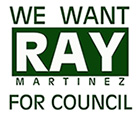The 2016 electric rate increase is necessary to meet the increased cost of wholesale energy from Platte River Power Authority (PRPA). PRPA is jointly owned by Fort Collins, Loveland, Longmont and Estes Park and provides all of the energy required by these four communities. In 2016 the amount PRPA will charge for wholesale electricity will increase 4.5%. This increase is driven by three factors.
The first factor being the increased fuel costs that you inquired about in your letter. PRPA generates almost all of its energy through coal generation facilities. Coal prices in the past have been established through long term contracts with both coal mines and railroads. These long term contracts are no longer desirable to the mines or railroads because they limit the potential for higher returns on shorter termed contracts. In 2015 one of the coal plants was out of service for 6 weeks (about 12% of the year) to do scheduled maintenance. It is expected to operate all year in 2016 so it is expected to use more coal in 2016. This is the increased fuel costs that are being incurred, rather than it being driven by the spot market price for coal.
The second factor being that surplus energy sales revenues are declining because the open market price for electricity is more directly related to actual per unit fuel costs. These fuel costs are on average declining as you pointed out. PRPA sells as much excess electricity generation as it can on the open market every year and uses that revenue to offset some of their fixed operational costs that would otherwise be charged to you and other customers through its wholesale rates. As the revenue from these sales has declined it has been necessary to increase the wholesale rates.
The third factor being the costs associated with developing a demand side management program at PRPA. Demand side management refers to any means used to limit the peak amount of electricity being demanded by customers. As our community’s only electricity source, it is necessary for PRPA to have enough generation capacity available to meet the peak momentary demand. Unfortunately, today there are still very few effective ways of storing electricity so it is necessary to produce that energy as it is needed, or demanded, by our customers. Demand side management can be a cost effective way of delaying the need to add additional generation facilities. As PRPA looks toward the future needs to add new generation and to replace aging generation facilities it will be important to realize any demand side reductions that may be possible. The additional costs in 2016 are centered on developing and staffing such a program. In 2016 PRPA will be building a utility scale solar array at the Rawhide facility. Renewable generation is particularly challenging because of the intermittent nature of such generation which makes the development of such a program timely.
The energy efficiency programs that I think you were referring to in your letter are programs that are run by Fort Collins Utilities and not PRPA. These programs are voluntary and are already built into the existing rates. It may be necessary in the future to increase rates because of costs associated with these programs although that is not necessary in 2016. We will try to be as transparent about those needs when they occur.
The wastewater rate increase is being driven by a need to continue to maintain and renew our sewer system. While some of the system is replaced each year either due to failure or old age, it is necessary to replace more of the system each year to maintain the level of service our community expects. Increased capital expenditures are needed to meet new regulatory requirements for water being returned to the Poudre River as well.
In recent years Fort Collins Utilities has tried to reduce the hardship that comes from rate increases by striving to have more gradual, modest rate adjustments rather than the larger adjustments that have been necessary in the past. We will continue to try to minimize the rate increase that may be necessary in any given year through long term financial and operational planning recognizing that any rate increase impacts everyone in our community.

Leave A Comment
You must be logged in to post a comment.